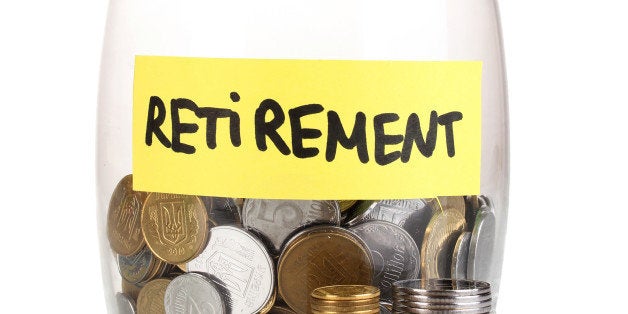
There are few milestones that are as life-altering as retirement. One day you have a job to go to and the next day you wake up uncertain about how to spend the following 18 hours until it's time to go back to sleep. Retirement is jarring, emotional and, thanks to the recent recession, a challenge to your financial well-being.
Studies show that many older workers today plan on staying on the job beyond the traditional retirement age. With increasing life expectancy and worries about outliving their savings, it makes sense to question whether a 20+ year retirement without work is practical, desirable or even affordable. A Merrill Lynch-Age Wave study found that 72 percent of pre-retirees over age 50
say their ideal retirement will include paid employment in some shape or form.
The result has been that, after decades of decline, working in later life is making a comeback -- whether it be born from financial necessity or a desire to stay involved. About 18.5 percent of Americans age 65 and over were working in 2012, according to the Bureau of Labor Statistics; in 1985, just 10.8 percent of Americans over age 65 were still at work.
The problem for companies is this: Having too many older workers hanging around can cause a bottleneck in the advancement pipeline. All companies need both experienced workers and young blood to be able to sustain the business in the future. But increasingly, those of traditional retirement age are staying on the job and not moving aside -- making room for younger workers.
Phased retirement is proving to be a promising compromise. This is when employers let workers shift to working part-time -- by either working a shorter day or shaving a day or two off the work week. It helps ease workers into retirement life and let's them have a glimpse of how their lives will look with less income coming in. It also helps the company by allowing it to bring on younger workers and have them be mentored by the older ones nearing retirement.
Even the federal government is getting into the game. Faced with the prospect that nearly one-third of its career employees will be eligible to retire in less than three years, Uncle Sam is letting eligible employees -- some as young as age 55 -- to cut their work hours in half and still accrue half their pension and full health benefits. One thing is central to the government's program: Phased retirees are required to spend 20 percent of their time mentoring the next generation of federal workers.
A 2013 AARP survey found that more than half of respondents describe the ideal job as one that offers this option. The Society for Human Resource Management says only about 4 percent of employers offer formal phased retirement programs; informal arrangements might raise this to about 9 percent — but that's still a low figure.
And the ability to reduce hours is not without some potential land mines. Pension benefits are tied to salary, so in some cases, working fewer hours for less money will adversely affect your payout, notes AARP. And then there's health care to worry about. Those under 65 are not eligible for Medicare. And even if they are 65 and older and do qualify for Medicare, the program does not cover their family or dependents. Some companies provide health insurance coverage to part-timers, so it's important to know if your health coverage will be impacted if you cut down your hours.
A lot of eyes are on Southern California Gas Co., which employs more than 8,200 people -- half of whom will be eligible to retire within the next 10 years. When they leave, they will take with them a tremendous amount of knowledge about how to run the nation's largest natural gas distributor. The utility came up with a plan to let older workers scale back their hours while maintaining full pay through part-time wages plus accrued vacation and sick leave. In turn, they mentor younger colleagues. Hal Snyder, human resources vice president of diversity and inclusion, declined to speak to The Huffington Post about how the program is working, but he told AARP that "It's been a win-win-win for us to keep these skilled workers here, to help transfer knowledge to younger, less experienced employees."
One likely reason that companies don't want to offer this stay-on-the-job incentive to everyone is that they want to target which workers they want to keep. Younger workers sometimes resent that this benefit isn't being offered universally, especially as they try and balance family obligations with work and have their own struggles.
What do you think of the idea? Let us know in comments.



